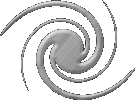
DEPARTMENT OF
ASTRONOMY


 DEPARTMENT OF ASTRONOMY |
Planetary
Atmospheres and Space Science Group
|
|---|---|
 |
 |



Note1:
The HST observation campaign for saturn was hinged by the safemode of the ACS instrument. It was originally planned for 01/13/07 through 02/12/07.
Note2:
There were no images taken during the B9 visit due to a guide star failure (the telescope was not able to point at Jupiter
Our goal in choosing the different filters was to get the best signal to noise and to be able to map the center of Jupiter and Saturn accurately. The best signal to noise is given in the F115 filter since this band corresponds to the wavelength at which the auroral signal is maximum (Lyman alpha). However only a small fraction of the planet can be observed in this filter in order to prevent saturation (the maximum count rate for ACS is 100000). Therefore mapping the center is more difficult with F115 images. Hence the choice to use a combination of F115, F125 mostly as well as a few images in F140 in order to map the center and the planet background. For saturn, the entire planet is in the field of view. It is therefore easier to map the center accurately and we did not any any F140 exposures.
To summarize, each visit is composed by a series of images in F125, then F115, then F125 for Saturn and Jupiter. For Jupiter, we also have a series of 5 orbits in F140.
| SATELLITE | ORBITS | VISITS | FILTER |
|---|---|---|---|
| Io | 6 Orbits | I0-I5 | ALL F125LP |
| Ganymede | 4 Orbits | I6-I9 | ALL F125LP |